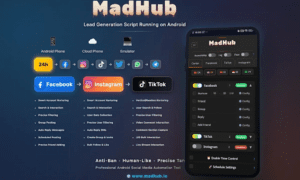In 2023, Amazon acquired One Medical. In 2024, it launched Health AI. In 2025, life insurance and annuities may be next.
Why? Because the global life insurance market is simply too big, too inefficient, and too human-dependent to be ignored. According to Precedence Research, life insurance and annuities accounted for over $8.2 trillion in annual written premiums in 2023 and are projected to reach $18 trillion by 2034.
Much of that value flows through outdated, analog distribution channels—powered by human agents, siloed systems, and a regulatory framework built for a pre-digital era. Add to that an estimated $400 to $500 billion in global annual commissions, and you have one of the last—and largest—untapped frontiers of digital disruption.
It’s not a question of if Amazon moves in. It’s a question of when. And if they do, the impact won’t be incremental. It will be foundational.
As Amazon CEO Andy Jassy noted in his 2025 shareholder letter, “Generative AI is going to reinvent virtually every customer experience we know, and enable altogether new ones about which we’ve only fantasized.” If that reinvention touches life insurance, the result won’t be an app update—it will be a redistribution of power.
Why Life Insurance Is a Prime Target for Amazon
Amazon doesn’t enter categories because they’re trendy. It enters them because they’re massive, inefficient, and structurally broken. Healthcare, logistics, and cloud computing were all fragmented until Amazon redefined what “ease” and “customer obsession” could look like.
Life and annuities distribution checks the same boxes. It’s manually driven, paperwork-heavy, and wildly inconsistent. Agents spend over 50% of their time on administrative tasks, according to a 2025 BCG report—leaving less time for advice, guidance, and growth. Product comparisons are rare. “Best interest” is still largely subjective. And customer experience varies dramatically depending on who’s across the table.
In Neil Lindsay’s words, “We’re on a mission to make what should be easy in health care, easier.” If that mission expands to life insurance, carriers still reliant on legacy agent networks, PDFs, and fax machines may find themselves playing defense in a platform-driven world.
Insurtech today has largely digitized underwriting and claims—but distribution remains a neglected frontier. Most platforms can underwrite faster, but few can help agents sell smarter. That leaves a massive opportunity for disruption at the agent and client experience layer —an opportunity startups like WealthSmyth AI are beginning to address by building distribution-first platforms that modernize how policies are recommended, sold, and serviced.
This isn’t just an operational drag. It’s a strategic vulnerability. The company that removes this friction will win—not just on experience, but on economics.
In short: it’s the kind of broken system Amazon loves to fix.
What Boards Should Be Asking
This isn’t a tech upgrade. It’s a business model inflection point.
The $400 to $500 billion global commission pool isn’t protected by contracts or brand heritage. It’s protected by simplicity, trust, and control of the customer relationship.
And as Jeff Bezos famously said: “Your margin is my opportunity.”
Amazon doesn’t need to become an insurer to upend the industry. If it controls discovery, recommendation, and the client experience, it controls distribution—and eventually, the economics.
So boards must ask:
- Where is your moat?
- Are your economics improving—or are you just getting bigger?
- What would it take for a competitor to offer the same product with less friction and lower cost?
If the answers are unclear—or uncomfortable—it’s time to rethink your model before Amazon redefines it for you.
Rethinking Distribution: A Strategic Imperative
Traditional distribution models, often developed reactively, may no longer align with modern market dynamics. As MIT Sloan Management Review observed: “Frequently, a firm’s
distribution method is an appendage to its strategy—the result of opportunistic, reactive, one-by-one decisions accumulated over time and frozen by perceived barriers.”
That misalignment becomes dangerous in a platform economy.
Frank Cespedes, a senior lecturer at Harvard Business School, emphasizes that sales remain “the biggest part of strategy implementation in most firms.” For life insurance carriers, that means rethinking distribution not as a support function—but as the front line of value creation.
Customer expectations are shifting fast. Legacy channels can’t keep up. Boards that treat distribution like a strategic asset—not a maintenance task—will be best positioned to compete.
The Call to Action
If a company like Amazon can offer life insurance with less friction, lower cost, and more trust, customers will choose them. That’s not disruption. That’s arithmetic.
Digitizing forms and modernizing portals won’t be enough. Carriers must rethink distribution from the ground up—designing it as a moat, not a marginal upgrade. The next generation of winners won’t just react to change. They’ll reshape their value chain before someone else does.
As just one example, AEGON’s independent distribution arm, World Financial Group (WFG), generates a significant portion of AEGON’s results—but is now vulnerable to AI-driven competitors. WFG, which has struggled with digital transformation and its MLM reputation, now faces a landscape where AI can do what agents do more efficiently—and with recommendations more objectively aligned with the SEC’s Regulation Best Interest. To stay competitive, AEGON and others like it will need a clear-eyed distribution roadmap with decisive action (as discussed in the Forbes article “The AI Roadmap for Life Insurance and Annuity Distribution”).
And they’ll do it by treating distribution like the strategic battleground it is.
Conclusion: Not a Tech Upgrade—A Business Model Reset
Amazon won’t launch a carrier overnight. It will start with distribution—removing friction, guiding product selection, and owning the client experience. That alone could capture meaningful share of the $500 billion global commissions market.
From there, Amazon could expand into MGA or platform-as-a-service models, shaping pricing, product design, and data access—without assuming risk. And if the economics make sense, it could go full-stack.
Boards should treat this moment for what it is: a reset, not a refresh.
Because in a platform-driven future, the entity that controls distribution will control margin, data, and customer loyalty.
If that’s not you, it’s going to be someone else.
And it might be Amazon.



































